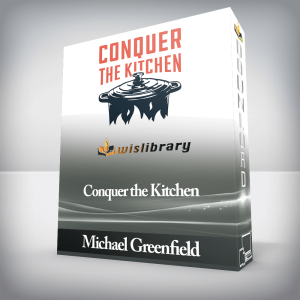Full DayIn our clinical lives we are faced with the task of seeing more patients in much less time. How do we manage? By spending less time on each patient and yet ensuring a precise physical assessment in the process.Purchase Hands-On Physical Assessment: More Patients, Less Time – Angelica Dizon courses at here with PRICE $199.99 $85Proven Physical Assessment Techniques in Today’s Fast-Paced EnvironmentImprove Your Confidence, Increase Efficiency, and Eliminate ErrorsNormal vs. Pathology – When Abnormal Becomes an IssueConduct Efficient and Precise Head-To-Toe Proper Assessment –Eliminate “Eye-Balling” PatientsPredict a Differential Diagnosis By Identifying Cardiac, Respiratory and Neurological DisordersHands-On Clinical Demo LabsIn our clinical lives we are faced with the task of seeing more patients in much less time. How do we manage? By spending less time on each patient and yet ensuring a precise physical assessment in the process.“8 in 10 misdiagnoses were due, in part, to problems in the patient encounter, such as errors during the physical exam or medical history-taking.” -American Medical AssociationWe cannot afford to miss any clues during the precious window of time that we have with each patient. That’s why, now more than ever – we must incorporate proper physical assessment skills and listening techniques into our daily practice. Attend this seminar and you will improve your confidence, increase efficiency, and eliminate errors. We guarantee this lecture will give you the tools you need, resulting in peace of mind that no errors were made at the end of each busy day – together we will change your practice.OUTLINEHead-to-Toe Approach – Learn tips, tricks, and tools to conduct a quick and precise head-to-toe assessmentAssess the patient using the most comprehensive approachEvaluate baseline and identify patient status changesDevise tips and tools to perform a more efficient exam without missing key cluesConduct proper assessment skills – inspection, palpation, percussions, auscultationNeurological Exam – Mastering the 6-Part components of a Neuro exam in less timeUnraveling the 6-Part components of a thorough Neurological ExaminationABCT Components of Mental StatusKey points and clues of using Confusion Assessment Method (CAM) Instrument and what can be diagnosed as a resultEvaluate an efficient and accurate assessment of normal vs. abnormal findings for: altered mental status, cranial nerves, motor, sensory, cerebellar functions, reflexesDanger Signs for abnormal findings and how to identify diseases by physical examinationLIVE PARTNER DEMOS: Practice with case studies and proper assessmentKey clues you can’t missRisk factors, readings, subjective and objective dataPlan of careRespiratory Exam – Identifying the different breath sounds and their locations to narrow down diagnosisPhysical assessment of the respiratory system – key points of normal anatomy to rememberIdentification of normal, abnormal, decreased or absent breath and lung soundsAssessment and techniques of Tactile Fremitus, percussion, lung auscultationInterpreting what you are hearing and what you should expect to hear:Bronchial, Broncho-vesicular, Vesicular Breath SoundsBronchophony, Egophony, Whispered PetroliloquyDeath Rattle, Absent Breath SoundsLearning the adventitious sounds like Crackles, Rhonchi, Stridor, Wheezes and what to do with themWhat Lung Sounds to expect in different disease statesLIVE PARTNER DEMOS: Practice with sounds: Listen, assess, and learnCardiac Exam – Knowing the different murmurs, their presentation, sounds and location to accurately pinpoint the disease processExamination of mitral, tricuspid, pulmonary, and aorticAuscultation sites, sequencing and skillsCharacteristics of a functional murmurHow to identify?7-point classificationWhen does a murmur become pathologic?Strategies for detection of abnormal cardiac soundsLIVE PARTNER DEMOS: Practice and learn with examplesOBJECTIVESAssess where and why vesicular, bronchovesicular and bronchial sounds can be normal or abnormal and the significance of the abnormalities.Interpret pathophysiology and differential diagnoses for crackles, wheezes, rhonchi and rubs.Discuss management of obstructive vs. restrictive lung disease.Practice a thorough 6-part neurological exam and document findings.Evaluate primary causes of mental status changes and patients most at risk for delirium for quick intervention.Distinguish whether abnormal S1 and S2 heart sounds are pathological or benign.Determine whether systolic and diastolic murmurs indicate cardiac disease.Tag: Hands-On Physical Assessment: More Patients, Less Time – Angelica Dizon Review. Hands-On Physical Assessment: More Patients, Less Time – Angelica Dizon download. Hands-On Physical Assessment: More Patients, Less Time – Angelica Dizon discount. Purchase Hands-On Physical Assessment: More Patients, Less Time – Angelica Dizon courses at here with PRICE $199.99 $85

 Crisis Counseling: Strategies and Interventions to Safely Manage Clients – Harry Keener
₹14,110.00
Crisis Counseling: Strategies and Interventions to Safely Manage Clients – Harry Keener
₹14,110.00
 Managing Challenging Patient and Family Behaviors: 101 Strategies for Healthcare Professionals – Latasha Ellis
₹14,110.00
Managing Challenging Patient and Family Behaviors: 101 Strategies for Healthcare Professionals – Latasha Ellis
₹14,110.00
Hands-On Physical Assessment: More Patients, Less Time – Angelica Dizon
₹14,110.00


